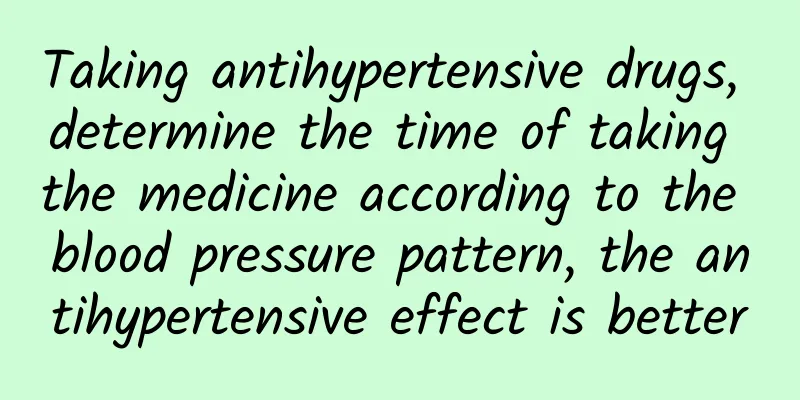Are diabetic nephropathy and renal diabetes the same thing? You must read these "misunderstandings"!

|
Diabetic nephropathy is a clinical syndrome characterized by persistent proteinuria and progressive decline in renal function. It is the main cause of end-stage renal disease worldwide, with an incidence rate of 20% to 40% among diabetic patients (more than 116 million in my country). "Renal diabetes" is very similar to diabetic nephropathy. Although they are both related to "kidneys" and "diabetes", they are not the same concept. The following is a detailed introduction to the two. Diabetic nephropathy and renal diabetes are not the same thing As we all know, diabetic nephropathy is the most common and serious complication of diabetes. Its pathological changes include glomerular hypertrophy, thickening of the glomerular and tubular basement membranes, and progressive accumulation of extracellular matrix in the mesangial region. In the later stages, it often manifests as glomerular and tubular interstitial fibrosis, ultimately leading to proteinuria and renal failure. The pathogenesis of diabetic nephropathy is relatively complex. Currently, it is mainly believed to be caused by the following aspects: (1) Glomerular hyperfiltration and high pressure caused by high blood sugar lead to changes in renal hemodynamics. (2) Promoting renal damage through inflammation and fibrosis. (3) Changes in diet and intestinal microbiota. (4) Genetic susceptibility and epigenetic modification, etc. Renal diabetes refers to the phenomenon of diabetes caused by decreased renal tubular reabsorption of sugar when blood sugar concentration is normal or lower than the normal renal glucose threshold (8.8-10 mmol/L). It is generally divided into primary and secondary types. The most common ones are primary diseases caused by congenital inheritance. Patients generally show low blood sugar, dysfunction of renal glucose reabsorption transport factors, and inability to complete normal filtration function, leading to the excretion of glucose. Secondary diabetes can be secondary to chronic kidney disease, such as chronic interstitial nephritis, nephrotic syndrome or multiple myeloma, nephrotoxic substances such as lead, cadmium, mercury, oxalic acid, cyanide poisoning, and other hereditary diseases. In other words, diabetic nephropathy is mainly a complication caused by "diabetes", while renal diabetes is caused by "kidney disease" and the occurrence of diabetes in the urine. The two are not the same concept at all. The treatment strategies for diabetic nephropathy and renal diabetes are different So, here comes the question. Many people may think that the common feature of both is "diabetes", so "diabetes" can be treated. But in fact, the treatment strategies for diabetic nephropathy and renal diabetes are different. The treatment plan for diabetic nephropathy generally includes lifestyle intervention, blood sugar control, drug therapy, etc. 1. Lifestyle intervention: This is an important strategy to improve the prognosis of diabetic nephropathy, including weight loss, appropriate increase in physical activity, low-salt and low-fat diet and smoking cessation, and encouraging patients to actively participate in self-management. The KDIGO guidelines recommend that the diet should be rich in vegetables, fruits, whole grains, fiber, beans, plant protein, unsaturated fats and nuts, and less intake of processed meat, refined carbohydrates and sugary drinks; patients should perform at least 150 minutes of moderate-intensity physical activity per week, or reach a level that is compatible with their own cardiovascular and physical tolerance. 2. Control blood sugar: Reasonable blood sugar reduction can not only control blood sugar levels well, but also delay the occurrence and development of proteinuria to a certain extent, and protect renal function. The 2021 Chinese DKD Guidelines point out that metformin is the first choice and basic medication for controlling blood sugar in patients with diabetic nephropathy. When renal function is impaired, the dosage needs to be adjusted or discontinued. When the patient's blood sugar does not meet the standard after using metformin, sodium-glucose co-transporter 2 inhibitors are recommended. Glucagon-like peptide 1 receptor agonists can be used in patients with diabetic nephropathy stages 1 to 3, and are not recommended for patients with end-stage renal disease. Dipeptidyl peptidase 4 inhibitors may reduce the risk of progression of diabetic nephropathy, but there is a lack of evidence on their effects on renal endpoints such as diabetic nephropathy-end-stage renal disease. 3. Control hypertension: Effective control of blood pressure can reduce the level of proteinuria in patients with diabetic nephropathy, delay the deterioration of renal function, and reduce the risk of cardiovascular complications. Currently recommended drugs include angiotensin-converting enzyme inhibitors, angiotensin receptor antagonists, mineralocorticoid receptor antagonists, mineralocorticoid receptor antagonists and beta-blockers. The treatment of renal diabetes is generally as follows: (1) For primary renal diabetes, it is currently believed that no special treatment is needed. Some patients who may develop hypoglycemia and ketosis should be given sugar supplementation. In order to prevent hypoglycemia, patients can be given enough carbohydrates to avoid prolonged hunger. During pregnancy, attention should be paid to strengthening nutrition and eating more meals. (2) For secondary renal diabetes, the main treatment is the underlying disease, such as chronic interstitial nephritis, nephrotic syndrome, multiple myeloma, etc. From the above, we can see that the treatment strategies of the two are different. In clinical diagnosis and treatment, nephrologists need to have a clear understanding of this. summary Renal diabetes and diabetic nephropathy are not the same concept and must not be confused. They need to be differentiated and diagnosed according to the patient's condition and symptomatic treatment measures should be taken. |
<<: [Doctors Talk] Antipyretic strategies for emergency pediatrics: safe and rapid
Recommend
How many days of menstruation are normal
Adult women have menstruation every month. During...
How to sprint one month before the high school entrance examination? How to improve mathematics one month before the high school entrance examination
With the development of society, people are incre...
What kind of environment is suitable for creeping pot grass? What does creeping pot grass look like?
Creeping pot grass is a herbaceous plant that is ...
What causes breast dysplasia in adolescent girls?
Because the problem of poor breast development in...
Are there crispy and soft lotus roots? How to tell whether lotus roots are crispy or soft?
We all know that lotus root is a common food. It ...
What does it feel like to have a 7 month fetal movement?
During the ten months of pregnancy, women should ...
How many beats per minute does the pulse take during pregnancy? How to identify pregnancy pulse
When watching palace dramas, we often see that th...
Breastfeeding, breast lumps, pain when pressed
If the symptoms become more severe, surgical trea...
When is the best time to have an abortion?
I believe that for many unmarried couples, an une...
How to hasten your period
Menstruation has always been a distress for many ...
What are the transmission routes of gynecological diseases?
Gynecological diseases are not just one type of d...
Putting your phone next to your pillow when sleeping, could it cause cancer? New research...
When making a call, people are used to holding th...
What are the symptoms after using the Xiaolu suppository?
Suppositories are external medications, so the si...
When is it most difficult for a woman to get pregnant?
When is it most difficult for women to get pregna...
What is the reason for bloody vaginal discharge?
Leucorrhea is a barometer of female vaginal healt...









